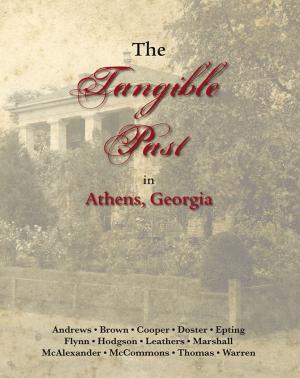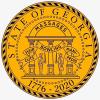Downtown: High-Rise Hell or Opportunity?
Pub Notes
Alarmed about the proliferation of student high-rise apartments downtown? So am I. Perhaps we should turn once more to the consolations of history, which have a way of putting things into perspective—always in short supply during changing times.

Photo Credit: Kenneth I. Storey, from a photo courtesy of Gary L. Doster
The Billups-Childs-Reaves-Nickerson House stood about where the Classic Center Theater is now.
As a general rule, grab yourself a copy of that big, fat volume, The Tangible Past in Athens, Georgia, which a bunch of local people, including me, produced last year. Avid Bookshop still has a few, and I think the store at the public library has some, but they’re just about gone, and there won’t be another printing.
For starters, look at Charlotte Thomas Marshall’s marvelous essay, “The Bookends of Downtown: Thomas and Pulaski Streets.” That one chapter will give you all the perspective you need to help you understand what is happening on the east end of downtown, where the student high-rises are rising high.
The people who were moving and shaking Athens in the mid-19th Century lived on Thomas Street while building cotton mills and railroads other businesses and running their plantations. Their mansions graced Thomas Street, and The Tangible Past contains photographs of those homes (including one on the cover) that show you just how graceful they were and what a nexus of Athens families that area contained. And yet in later years it was all ripped down to make way for the commercial expansion of what we now call downtown. And the adjacent “Lickskillet” area was obliterated by Urban Renewal, even to the destruction of the orderly block-by-block street grid, cut through by the gash that twisted Dougherty Street toward North Avenue.
The destiny and definition of any city are driven by entrepreneurial impetus, abetted by government. One outcome of the disastrous Urban Renewal was a government subsidy that brought us Bethel Homes, not to mention the land grab on Baxter Hill that destroyed a stable black community, for what? Student high-rises—university dorms.
Back on Thomas Street, the razing of the mansions turned that thoroughfare into a sort of urban-edge street for a long time: the fire hall; service stations; a sewing plant that became a flea market, restaurant and music club; newspaper offices.
Then came the rise of modern-day Thomas Street, when the Athens-Clarke County (by then unified) government followed through with the building of the Classic Center, but only after irate citizens rose up and kicked out one of the nation’s premier architectural firms because its design was deemed lackluster and it demanded the destruction of the fire hall. At the other end of the block, the Morris Corporation was building its Taj Mahal of a Banner-Herald building, celebrating the power of the newspaper.
Mark Jacobson wrote recently on his New York Magazine blog, “It is said that in times of discontent, a society yearns for the last era of perceived sanity.” But he also made clear in the same article that the city is always changing, and one era is constantly morphing into the next. The Classic Center thrives; the Banner-Herald shrinks into a corner of its once-proud flagship. In its thriving, the Classic Center truncates a main downtown street, absorbs another and masks, at least from behind, the old fire station it was designed to preserve.
Now comes the latest wave of luxury student high-rise apartments, responding to the local iteration of a national trend for students to live within walking distance of school and entertainment. Ushered into the very heart of our city they come, with zero ties to or interest in the town, except as a place to park, to sleep, to eat and drink, perchance to learn. And then they’re gone: a far cry from those now-displaced citizens who built Athens.
This demand for close-in student living coincided with a period of government quiescence here. The Mayor and Commission who built the Classic Center gave way to a Mayor and Commission who declined to play a part in shaping that section of town, leaving it to the college kids and the guys with big lines of credit to do it for us.
As the student apartment glut continues toward its crescendo, Athens will adapt, as always. We thought local business was dead downtown when Georgia Square Mall opened at the beginning of the ‘80s, but local business adjusted and came back stronger than ever. Local business will simply have to try harder again in hopes the kids will notice something that appeals more to them more than the ubiquitous fare they grew up on in Cobb County. That is, after all, the strength of local business, isn’t it? Better taste, better service, better understanding of what customers want here, in this place, now. That’s nothing new; it’s the challenge that businesses always face. Athens has adapted to the university from its very beginning—most successfully when there is strong leadership.
More by Pete McCommons
-
Voting Absentee: Necessary But Not Easy
Pub Notes
-

Be Ready When National TV Comes Calling
Pub Notes
-










comments